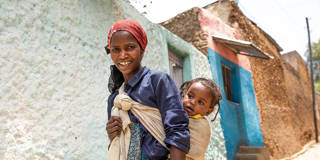
Financing Family Planning in Low-Income Countries
More Ethiopian women are using family-planning services than ever before, but the Ministry of Health faces a country-wide shortage of contraceptives. As a result, the government has developed innovative health-financing strategies to close the funding gap in the short term and to increase country ownership in the long term.
ADDIS ABABA – As a busy young mother of four living in a remote village in Ethiopia, Amina could not always attend her appointments at the health clinic to receive her injectable contraceptive. So, when Selam, a health worker at the clinic, walked her through the available options, Amina was excited to learn about a long-acting reversible implant that would obviate the need for regular visits.